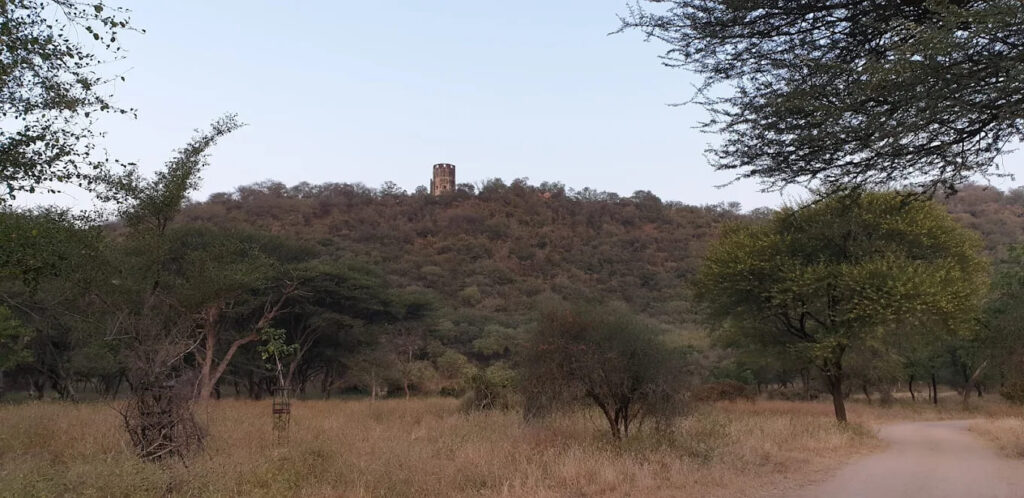If you’re in Jaipur and looking to step away from the hustle of the city into a quieter world of nature, the Neemgatta Bird Watching Point is a hidden gem worth exploring. Nestled in the Malviya Nagar area of Jaipur, this site brings you closer to birdlife and offers a peaceful half-day or full-day escape.

Although it hasn’t yet become as famous as some large bird sanctuaries, Neemgatta is increasingly recommended as one of the good bird-watching trails around Jaipur. In this blog you’ll find out what makes it special, whether it’s good for migratory birds, which months are best to visit, and practical tips for your visit.
What is Neemgatta Bird Watching Point?
Located at VRJX+QJJ, Malviya Nagar Industrial Area, Malviya Nagar, Jaipur, Rajasthan 302017.
Google Map Location: https://maps.app.goo.gl/3koeYjw3YguKcPFo9
The site is part of the outskirts of Jaipur where natural vegetation, open land and water patches create favourable conditions for birds. As listed in bird-watching site compilations for Jaipur, it features among walking trails for nature lovers.
From quiet paths to open skies, Neemgatta offers a simple but pleasant bird-watching experience without a full sanctuary setup. For visitors staying in Jaipur it can be a convenient nature break.
Which Place is Famous for Migratory Birds?
While Neemgatta is a fine option, if you are seeking the most famous destination for migratory birds near Jaipur, other sites currently hold stronger reputation (such as Man Sagar Lake which attracts winter migrants like common teal, Eurasian wigeon and northern pintail).

However, Neemgatta is part of a network of bird-watching trails around Jaipur that are highlighted for spotting resident and some migratory species.
So, if you’d like to focus specifically on migration hotspots, larger water bodies like Man Sagar Lake or Chandlai Lake are more widely referenced. But for a less-crowded walk and nature time near Jaipur, Neemgatta delivers.
Please also check: Top 10 Must-Visit Places in Jaipur
Which Months Are Suitable for Watching Migratory Birds?
In Rajasthan and around Jaipur, the best months to view migratory birds are typically from November to February. During winter, migratory species from Central Asia, Siberia and Europe arrive to escape harsh cold and find favourable conditions.
At Neemgatta, though specific documented counts of migrants may be limited, planning your visit in late November through February will increase chances of spotting a wider variety of birds (both resident and migrant). Early mornings are especially good as birds are more active.

During other seasons:
- Monsoon (July – September): Vegetation is lush and resident birds are active, but fewer migrants.
- Summer (April – June): Hot weather reduces bird activity during midday; early morning or late afternoon visits work best.
What You Might See
While exact species lists for Neemgatta are not widely published, based on the habitats and what bird-watchers report for the Jaipur region you might encounter:
- Resident Indian species: kingfishers, bee-eaters, hornbills (depending on area), raptors overhead
- Wetland/edge species: various ducks, waders if water bodies present
- Migratory ducks and waders in winter: for example around Jaipur lakes, species such as northern pintail, common teal, Eurasian wigeon have been documented.
- Passerines and smaller birds attracted to open land and scrub.
Bring binoculars and a camera, and try to visit during early or mid-morning for best light and bird activity.
How to Visit Neemgatta Bird Watching Point
Location & Access
- Address: As above, Malviya Nagar Industrial Area, Jaipur.
- From Jaipur city centre it is reasonably accessible; you can take a cab or auto-rickshaw.
- Wear comfortable walking shoes, bring water, and maybe a light jacket for early morning periods.
Best Time to Visit
- Arrive shortly after sunrise if possible.
- Visit during November–February for migratory-bird chances.
- If visiting in summer or monsoon, target early morning or late afternoon slots.
On-Site Tips
- Be quiet and move slowly to avoid spooking birds.
- Use binoculars or zoom lens for best experience.
- Respect local terrain and don’t disturb habitat.
- Consider combining with other nature spots around Jaipur for a half-day outing.
Why Neemgatta is Worth It
- Less crowded than major sanctuaries, offering a quiet birding experience near Jaipur.
- Good for nature lovers staying in Jaipur who want a short escape to observe birds.
- A useful complement to heritage tourism in Jaipur switch from forts and palaces to ducks, birds and trees.
- Flexible timing: you can visit early morning and still be back in Jaipur for other activities.
Final Word
Whether you are a serious birder or simply someone who enjoys nature’s quieter moments, the Neemgatta Bird Watching Point in Jaipur invites you to slow down, watch, and listen. Visit in winter (November-February) for the best chance of migratory guests; at any time expect a calming walk amongst birdlife, open skies and fresh air.
Next time you’re in Jaipur and want a break from bustle, head to Neemgatta your binoculars might just catch a migrant duck, a raptor circling overhead or a family of kingfishers perched on a branch in golden sunlight. Nature’s small treasures await.
